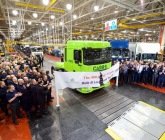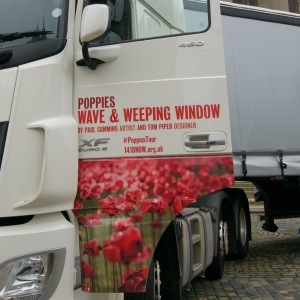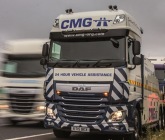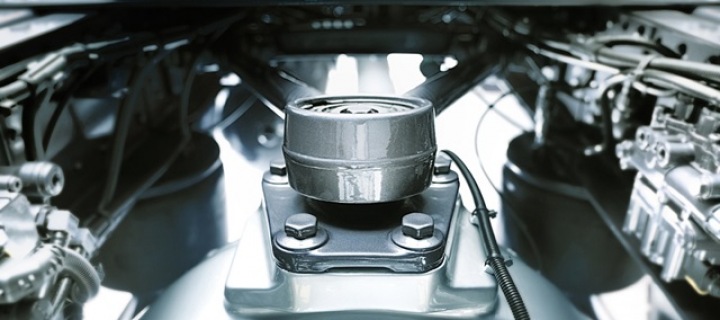
Chassis
The chassis is a completely new development. It offers high payloads through low unladen weight. The high rigidity ensures excellent driving characteristics. Components are cleverly positioned with a view to the highest efficiency. A perfect base on which to build.
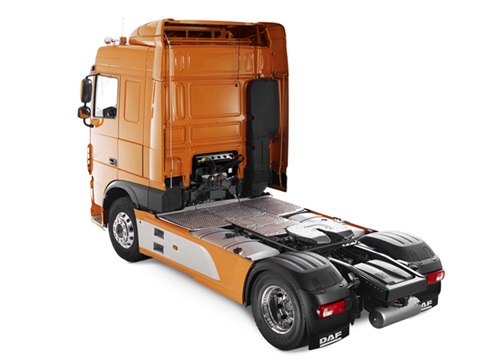
All new chassis frame of the new XF
The front end of the chassis allows for space for the extra wide engine cooling. The solid Front Underrun Protection beam also protects the radiator. The rigid and stiff front end of the chassis provides accurate steering characteristics.
The new Stabilink rear axle suspension not only reduces kerb weight but also adds to the improved steering characteristics. The axles, axle suspension and steering are designed completely new to reduce kerb weight and improve performance.
The new chassis of the new XF is made of high-tensile steel. This gives an extremely efficient, strong but light chassis for a high payload capacity. The front towing devices allow a full 50 ton combination to be towed away. The middle section is light and flexible. The centre K-crossmember in the chassis deals with the lateral forced imposed on the chassis. The rear crossmember is chamfered and slightly raised above the chassis to stop the semi-trailer from catching the chassis member.
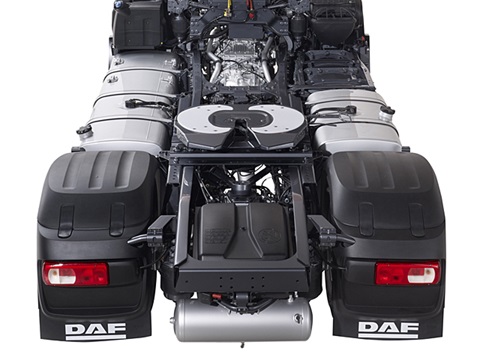
All new chassis lay-out
For DAF, the creation of as much space as possible on the chassis was a key objective. Despite the presence of the EAS (Exhaust Aftertreatment System) unit with SCR catalytic converter and a soot filter for cleaning the exhaust gases, the aim was to realise fuel tanks with a total volume of 1,500 litres on a wheelbase of 3.80 metres and/or sufficient space to mount pump units, hydraulic tanks and toolboxes. To achieve this, the batteries are positioned at the rear of the chassis and the standard 90 litre AdBlue tank (option tank 140 litres) is now positioned under the cabin.For optimum ease of use, this can be filled directly from behind the rear of the cab.
The new Engine Aftertreatment System (DPF and SCR) module is generally situated closest to the engine, behind the RHS front wheel. The batteries can be positioned in the rear overhang to allow for maximum space between the axles. Up to 1500 litres of fuel tank capacity can be ordered. The optional spare wheel carrier is combined with the battery box on the RHS for optimum function integration, minimum space and lightweight design.

